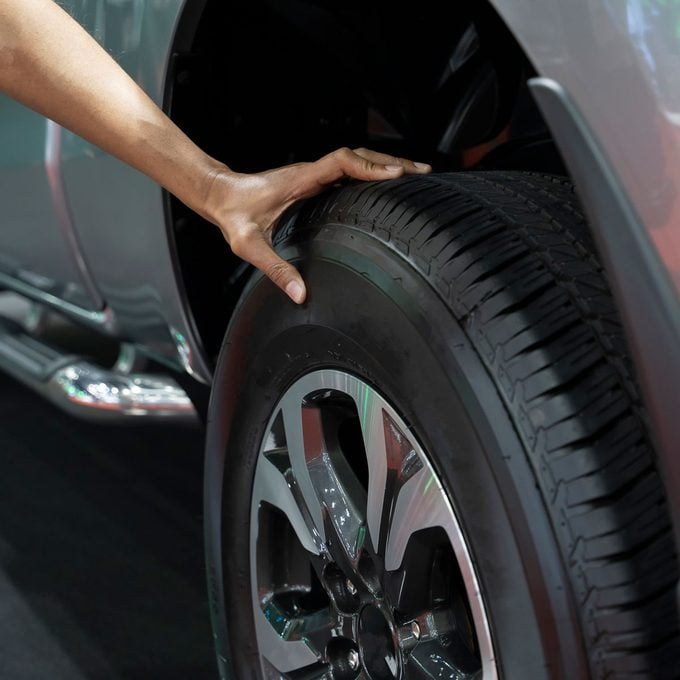How Long Do Tires Last?
Updated: Jul. 13, 2023
The answer to the seemingly simple question "How long do car tires last?" isn't that simple. Here's why.
How Long Do Tires Last?
Tire manufacturers agree that a definitive answer for the question “How long do tires last?” does not exist.
Goodyear has concluded that most tires (driven a typical number of miles under normal service conditions) wear out after three or four years on the road, and quotes Federal Highway Administration data that estimates the average American drives about 13,500 miles annually. All manufacturers recommend professional inspection annually after five to six years of service and removal at 10 years regardless of condition. Finally, the industry’s best warranties expire after six years in service, regardless of mileage.
Why Won’t Manufacturers Give a Straight Answer?
Although it may seem like an easy question to answer, tire manufacturers actually are justified in their ambiguity. The number of variables affecting tire lifespan creates an effective range that becomes virtually meaningless. However, for most consumers trying to manage a household budget that includes pricey maintenance schedules for their vehicle, the answer, “two to 10 years” doesn’t help much.
The life of a tire depends on a bunch of factors: driving habits (peel-out starts = bad), where and how it is stored (parked in a garage = good), weather and climate, the blend of tire material, design, maintenance habits and road conditions. Just about any single factor may cover a situation where the tire becomes unusable. Thus, you see the manufacturer’s dilemma.
How to Optimize Tire Lifespan
To get the most life out of a new set of tires, manufacturers recommend the following tire maintenance practices:
- Have the wheels balanced and get an alignment at installation. Wheels that are out of balance or out of alignment cause uneven and premature tire wear, shortening the usable life. Start your new tires with a clean slate. Furthermore, if you feel your car consistently drifting to one side on a straight road, have the alignment checked as soon as possible. Properly balanced tires and wheel alignment extend tire life.
- Check the tire pressure regularly — as often as every month! Over- or under-inflation is the other significant cause of uneven tire wear, prematurely aging your tires. Use the reference chart on the frame inside the driver’s door frame to determine the proper inflation range for your vehicle and keep it within tolerance. Checking pressure regularly with a digital gauge also allows you to inspect the tires for uneven wear, cracks, abnormalities, damage and the appearance of wear-indicator bands that signal the need for replacement.
- Rotate your tires. The longer a tire stays in the same position on your car, the more likely it will wear to fit that corner’s peculiarities. Rotating the tires every 5,000 to 8,000 miles keeps all the tires wearing evenly, extending the life of the set.
- Use in a way consistent with tire design. Take care to run your snow tires only in colder months and summer tires only in fair-weather months. Extending use into a season they weren’t designed for can accelerate wear, cause damage to the tires and compromise safety.
Factors That Shorten Lifespan
There are also things you may be doing that increase the wear on your tires. In addition to following the above practices, avoid these other situations that can damage your tires or reduce their lifespan:
- Improper storage. Storing your car with weight on the tires can weaken the sidewalls or cause flat spots. Either can affect the safety and performance of your tires in addition to shortening their lifespan. The material comprising the tire surface also responds to environmental factors such as strong sunlight, ozone (produced by electric motors) and humidity. Improper storage exposing the tires to these destructive forces can cause damage through cracking and dry rot.
- Improper rating. Manufacturers rate each tire model for load and speed rating (faster speeds generate more friction, which means more heat). Installing a tire not rated for your specific needs will likely damage the tire and cause it to fail — a risk no one should take.
- Mixing tires. Ideally, you should install the same tire all the way around your vehicle. Mixing styles or old and new ones puts uneven stress on the tires and accelerates wear, often resulting in damage. And mixing tires will compromise your safety. If you must change out a damaged tire on your vehicle, at least do it in pairs and keep them on the same axle. Consult your mechanic or tire installer, as specific practices must be used for installation and rotation.
What About Warranties?
Tire warranties seem like a great way to hedge against premature wear, but manufacturers only grant claims under optimal circumstances. First, the tire must exhibit even wear. If your tire shows signs of poor maintenance or careless use, that nullifies the warranty. Furthermore, the tread must be fully worn down to 2/32nds of tread. You’ll also need your service records showing date and mileage at installation and a record of regular rotation.
